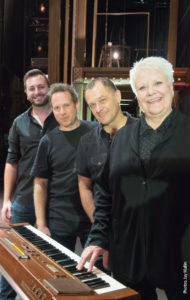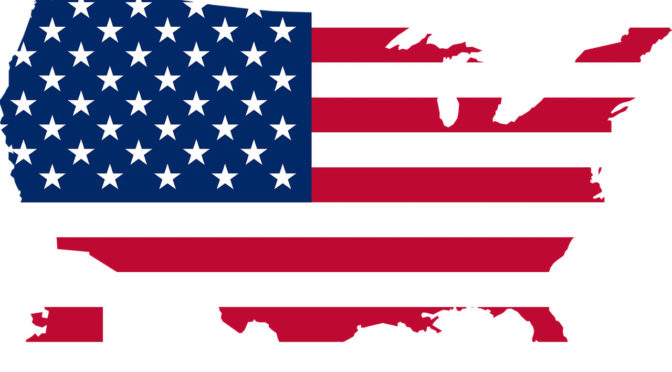Susan Draus: On the R oad with Beautiful—The Carole King Musical — As music director for the touring musical Beautiful: The Carole King Story, Susan Draus of Local 802 (New York City) feels a bit like her career has come full circle. Draus, who was playing music before she was old enough to read, always knew it would be a big part of her life.
oad with Beautiful—The Carole King Musical — As music director for the touring musical Beautiful: The Carole King Story, Susan Draus of Local 802 (New York City) feels a bit like her career has come full circle. Draus, who was playing music before she was old enough to read, always knew it would be a big part of her life.
Growing up in Calumet City, Illinois, where students began learning their instruments in kindergarten, Draus thought she would one day be a conductor. The clarinetist seemed well on her path when she attended Interlochen on a full scholarship in 1971. However, she abruptly dropped the instrument that same year.
Carole King’s album Tapestry so inspired the young musician, that Draus decided she’d rather become a songwriter. After high school, she launched her own band, Wildwood, before moving to Los Angeles to study music. “I started working in Disneyland with the all-girl band and had my own little band, Outskirts. I wasn’t going down the musical [theater] path at all,” she explains.
Instead, her path slowly merged into musical theater almost by accident. “A friend asked if I would music direct this little show at the Melrose Theater called Ten Percent Revue. It was a tiny little stage and a five-person cast, plus me,” she says of the show in which she also played, sang, and danced. To their surprise, Ten Percent Revue won several Drama-Logue awards, including Best Music Director and Best Ensemble.
After completing keyboard and film scoring programs at the Dick Grove School of Music, Draus moved to Denver, Colorado, in 1991 to become Artist in Residence at Smoky Hill High School. While the teaching was great, Denver didn’t offer many choices as far as bands to play in, so she sought projects at local theaters. Eventually, she became music director for the Arvada Center for the Arts and Humanities where her passion for musical theater grew.
“Arvada was definitely my training ground for musical theater,” she says. “We did classics like Gypsy, Singing in the Rain, and West Side Story, but we also did Violet and Blood Brothers. It was great for me to learn how to conduct and play at the same time. I loved it.”
“My first big national tour was Mamma Mia,” says Draus. “I started out on keyboard 4 and worked my way up to music director/keyboard 1.” Following Mamma Mia, Draus did Good Vibrations on Broadway, but decided she liked touring better. She’s traveled with Billy Elliot, Sister Act, and Book of Mormon.
 But Beautiful is special. “It really has come full circle for me, every single aspect,” says Draus. Draus never dreamed she would one day combine her admiration for the songs of Carole King with her passion for musical theater.
But Beautiful is special. “It really has come full circle for me, every single aspect,” says Draus. Draus never dreamed she would one day combine her admiration for the songs of Carole King with her passion for musical theater.
Draus’s favorite Carole King song, and the one that made her want to be a songwriter, is “It’s Too Late.” However, her favorite song to perform in the show is “Will You Still Love Me Tomorrow” because of “how it’s placed in the show, and the emotion around it.”
Beautiful travels with three musicians, aside from Draus, who is also conductor/keyboardist. It picks up eight local musicians at each stop. And though she would prefer to travel with as many permanent musicians as possible, she says Beautiful lends itself well to this arrangement. “This show is laid out so it kind of plays off itself. Not every show is this straight ahead with its songs,” she explains.
Among the perks of the job of a touring music director is the travel itself and the nationwide venues she gets to play at. “I’ve gotten to see this country and cities I would never have gone to before this. I love that,” says Draus. “Right now, for crying out loud, I’m conducting in the Kennedy Center. We are going to play the Pantages Theatre in L.A. That’s pretty cool!”
Among the challenges of the job is working eight shows a week, plus rehearsals. “Our thing is, every time you step up there you are trying for a perfect show,” she says. “I don’t think people realize how many rehearsals there are, especially for the keyboardist.” Aside from the doubles on Saturday and Sunday, there is a rehearsal and sound check on Tuesday, plus rehearsals Wednesday through Friday.
And, on Tuesdays in a new city, Draus starts at square one with a fresh group of local musicians. “After a while, I am tired of my own voice and saying the same things,” she says. “How many ways can you say crescendo?”
But, there’s also an upside to moving to a new city. “No matter who you are—on stage or down in the pit—if you are doing eight shows a week it gets to be this routine, and you can check out pretty easily. What keeps it fresh is that—bam!—we are in a new environment. It sounds different, looks different, new people in the pit. You get this new boost of energy, which is pretty cool. I can’t tell you how many times people come up and tell me, ‘Gosh, the tour sounds so fantastic!’ I think we keep it fresh because every two weeks you are in a new environment.”
Draus says it can be difficult not having other musical diversions on the road. “When you are in New York you can step out and do other gigs. When you are out here, after a while, you start wondering if you could even read a chord chart or play another piece of music.” For this reason, Draus says the traveling musicians seek other projects to work on. Draus also has her own company, Tantrum Productions, which provides arrangements for schools, choirs, and corporate events, and original works across the country.
A long-time AFM member, Draus says she always sticks with union gigs. “They are always higher paying and better working conditions.” Through the union, she is also able to network with musicians in the field to find new work and recommend others for jobs.
She has advice for other union musicians interested in musical theater work. “Work on sight reading and your ability to play all styles,” Draus says. “Network with musicians. If you want to be a pit musician, go right up to the MD and just say, ‘I’m a student and I’m studying this, and I would really love to do what you do, can I sit in the pit?’ That’s invaluable.”
Even with all the challenges of life on the road, Draus realizes that she is lucky to be performing in a job she loves. “I’ve only had four regular ‘day’ jobs in my life and they probably total a year altogether. I’ve been able to make my living as a musician and that’s pretty cool. I’ve been very lucky. The last 10 years have been really great, going from one show to the next. I’ve met such lovely people—great contractors, general managers, music supervisors, and everybody involved.”
Exploring Life in the Pit
 The job of pit musicians is unique in many ways. Eric J. Stockton (guitar), Nick Williams (keyboard/associate conductor), and Shannon Ford (percussionist) of Local 802 (New York City) are touring with Beautiful: The Carole King Story.
The job of pit musicians is unique in many ways. Eric J. Stockton (guitar), Nick Williams (keyboard/associate conductor), and Shannon Ford (percussionist) of Local 802 (New York City) are touring with Beautiful: The Carole King Story.
Eric J. Stockton
Eric Stockton’s first theater experience was subbing for a dinner theater production of Big River in Phoenix, Arizona. He relocated to New York City in 2011, where he subbed for Big Apple Circus, and then the Broadway revival of Godspell. Eventually he was offered a chair on the national tour of Flashdance, then the Broadway show Soul Doctor and Rocky at the Winter Garden Theater. When Rocky closed, he asked a friend how to keep the party going. He said, “Tell the contractors you’ll tour.” Stockton worked on Kinky Boots’ first national tour before touring with Beautiful.
Q. What attracts you to this work? It’s show business, so it’s a fun scene. You get to work with musicians of the highest caliber in the pits in New York City. Plus, there’s a union contract, so there are benefits and rules for time off, etc. On the road it becomes a little harder because you can’t sub out as easily, but still, the touring bands, and many of the local musicians, are excellent at their craft and it’s fun to belong to a group of traveling gypsies.
Q. How do you keep your playing fresh and energetic when performing the same tunes night after night? The show keeps evolving in ever so subtle ways. On the Beautiful tour the songs are so great that playing them doesn’t ever get stale. I don’t necessarily play the same thing all the time. On other shows that’s more important. I’m not necessarily improvising, but as a rhythm section player, there’s room to change it up.
Q. How has AFM membership helped you? I get health insurance, if I work enough union contracts. The pension will help me in retirement. I purchase affordable instrument insurance through the union. Beyond that, it’s a network of players who, like myself, wish to make a living playing my instrument.
Q. What tips do you have for young musicians interested in working in a musical theater pit? Try to find what inspires you musically and work on that. Broadway is a good gig, but I think it should only be a part of your career portfolio. My heroes are Bob Dylan, Eddie Van Halen, Frank Zappa, and Miles Davis—I don’t think they ever played in a pit. Maybe Zappa did, once.
Q. What aspect of playing for musical theater might surprise other musicians? There is a ton of work involved in learning to play a book the way it should be played, whether subbing or on your own chair. This should not be taken lightly.
Q. Do you have any side projects? While on the road, a lot of my side projects fall by the wayside. In October I went to New York City to record with a songwriter friend. Also, my partner in crime, Dillon Kondor [of Local 802], has a new record coming out that I played on. I hope to play more live gigs with his band, Kondor. There’s a recording of my tunes called Roots on iTunes and at ericstockton.net.
Q. What gear would you never leave home without? Fingernail clippers for sure, and I just bought a very sweet Fender Custom Shop Nocaster that I am loving dearly on the road with Beautiful!
Nick Williams
Nick Williams has played the piano for musical theater for 27 years. He studied acting in college, but started arranging and music directing on the side. Soon after graduation he realized music was his passion. He took on as many projects as possible, working his way up to play and conduct off-Broadway, as well as for nine national tours.
Q. What attracts you to this work? Musical theater can encompass such a broad range of musical styles. We still have the traditional Broadway sound, but people are finding fantastic new ways to tell stories through all kinds of styles. Touring is such a unique experience—taking a show across the country and seeing different audiences enjoying it.
Q. How do you keep your playing fresh and energetic when performing the same tunes night after night? That’s never been an obstacle, although maybe I’ve been lucky to work on shows with music I love. There are always things to work on and discover in the scores. Beautiful has such satisfying, groovy music and profound lyrics—both have huge cultural resonance. The arrangements make the show a blast to play, so it’s not hard to enjoy this music every night. Not to mention, the rest of the traveling gang (Sue, Shannon, and Eric) are great fun and terrific musicians.
Q. How has AFM membership helped you? Having a union that protects the musicians’ best interests is essential to doing what we do, especially when you throw in the variable of traveling. The AFM agreements, and knowing they’re there for us, provide the security and support to be able to do our jobs even better.
Q. What tips would you have for young musicians interested in working in a musical theater pit? Get yourself out there. Do festivals, do readings, play for cabarets, see shows, and meet people. Be familiar with many styles, be open to learning from others, stay up on the technology of your instrument, and above all: be kind, proactive, and responsible.
Q. What aspect of playing for musical theater might surprise other musicians? It surprises even me how many patrons come down to the pit to tell us how much they loved the orchestra. It’s easy to forget that there is almost always a musician in the audience, professional or not, who plays your instrument, hears exactly what you’re playing, and appreciates it.
Q. Do you have any side projects? Lately, my focus has been on Beautiful, I do transcriptions, audition/vocal coaching, etc., while on the road. You can find information about my recent undertakings at: www.katonkeyz.com. I’m always looking for fun side projects.
Q. What gear would you never leave home without? I travel with an Axiom 49 key controller with an interface, along with lots of sample libraries. My road MacBook Pros are loaded with Ableton, Logic, Mainstage, and other fun audio stuff. I’ve also got a Bluebird cardioid condenser mic in my trunk for recording.
Shannon Ford
Shannon Ford moved to New York City in 1992 and began subbing for Broadway and off-Broadway shows. His first show was The Who’s Tommy, which he describes as “one of the scariest experiences of my life.” Ford continued to network within the community, taking advantage of every workshop, he could find.
Q. What attracts you to this work? I like the discipline and high standards of the people in this community. Playing shows has improved my focus and consistency as a musician. Pension and health insurance aren’t bad things to have, either!
Q. How do you keep your playing fresh and energetic when performing the same tunes night after night? I don’t find it difficult playing the same songs nightly. Sometimes it’s a challenge to stay focused, but I try to remember what it feels like to be the guy that just played the biggest clam of the night. It’s about that and being true to your work ethic in the first place.
Q. How has AFM membership helped you? The union has established guidelines that allow me to earn and protect a living wage as a musician. Thanks, you guys!
Q. What tips would you have for young musicians interested in working in a musical theater pit? As a rhythm section player, I encourage young musicians to spend time in a real band. There is a social dynamic and style of performance that I believe you can only get from that experience, and it is useful in a pit. Learn as many styles as you can, and make peace with the give and take required to work effectively with a conductor. Drummers, learn to make up a part while sight-reading a 26-page piano/vocal score. (Bring scotch tape and some white-out.) You’ll thank me later! Also, get familiar with how a musical theater company is run. It’s taken me forever to figure out who does what in which department!
Q. What aspect of playing for musical theater might surprise other musicians? I tend to get hired by good relationships with musical directors and composers, as well as by contractors. Establish them and maintain them. They are a bigger part of the equation than many realize.
Q. Do you have any side projects? Since I’m touring, my days are generally freer than they have been in a while, so I’m practicing more and improving my production and composition skills.
Q. What are a few pieces of gear that you would never leave home without? My Nespresso espresso machine! Can I get
an endorsement?
The Local Connection … Life in the Pit
The full-time traveling musicians are not the only AFM members who enjoy playing touring theatre productions, as most shows hire many of the musicians they need locally.
 While repetition means traveling players can practically play their parts from memory, locally-hired musicians experience an entirely different challenge: perfectly executing two to three hours of complex, stylistically diverse, and rhythmically tricky theatre scores with very limited rehearsal time. In a field where you really are only as good as your last performance, theatre musicians represent the cream of their local crop.
While repetition means traveling players can practically play their parts from memory, locally-hired musicians experience an entirely different challenge: perfectly executing two to three hours of complex, stylistically diverse, and rhythmically tricky theatre scores with very limited rehearsal time. In a field where you really are only as good as your last performance, theatre musicians represent the cream of their local crop.
For the core traveling musicians, this means a different group of colleagues every booking—for some shows, this means a different ensemble every week. Local and traveling players by necessity have to be good colleagues, and learn to harmonize quickly, both musically and professionally.
Nancy Whelan (keyboard) of Local 500 (Raleigh, NC) joined the show during its stop in Charlotte, North Carolina.
Whelan says she caught the “theater bug” at Cary High School in 1978 as pianist for Fiddler on the Roof. Since then, she’s been musical director/pianist/keyboardist for more than 85 productions. For the past 10 seasons, she’s been the associate musical director and orchestra contractor at North Carolina Theatre in Raleigh.
Q. What attracts you to this work? It’s great being able to live at home and be a full-time freelancer. I appreciate both the stability of living in one place, as well as the excitement of playing a variety of musical genres.
Q. How much time are you generally given to learn the book? When playing local keys for a touring show, we get the books anywhere from one to three weeks ahead. Generally, we only get one four-hour rehearsal with the touring musicians (the day of show), have an hour sound check, then we open that night.
Q. Is it difficult to build rapport with musicians you play with for only one or two weeks? No, especially when we get touring folks like Sue, Nick, Shannon, and Eric. They were all so incredibly positive, helpful, and relaxed—an absolute pleasure to collaborate with.
Q. How has AFM membership helped you? Although North Carolina is a “right-to-work” state, I feel it is important (and I am proud to be) a member of Local 500.
Q. What tips do you have for young musicians interested in working in musical theater? Get all the experience you can in your school and local community theatre, and volunteer at a professional theatre, if there is one nearby. Pianists, in addition to regular practice, hone those sight-reading skills. For reeds players, doubling makes you even more of a hot commodity. Make as many connections as you can. Often, knowing the right person or being in the right place at the right time is how you’ll get that big break.
Q. What is one aspect of playing for musical theater that might surprise other musicians? It takes a different set of skills to play theatre versus straight orchestral playing. People who aren’t in theatre may also be surprised at the often incredibly short amount of rehearsal time we have before opening a show.
Q. What other projects are you working on? I play for NC Theater, local keys for tours, ballet (Carolina Ballet), choral accompanying, and am a collaborative pianist for instrumental recitals. The day after Beautiful closed, we began rehearsals for Into the Woods at North Carolina Theatre, which opened in October. I will be playing the Holiday Pops run-outs with the North Carolina Symphony.





 We all know what’s wrong with eating too much restaurant food on the run. Too much fat, sugar, and salt combined with hurried eating can lead to weight gain, fatigue, sluggishness, and even worsening pre-existing health conditions. Often there’s also a lack of fiber in a road diet, and usually fresh greens are in short supply.
We all know what’s wrong with eating too much restaurant food on the run. Too much fat, sugar, and salt combined with hurried eating can lead to weight gain, fatigue, sluggishness, and even worsening pre-existing health conditions. Often there’s also a lack of fiber in a road diet, and usually fresh greens are in short supply.


